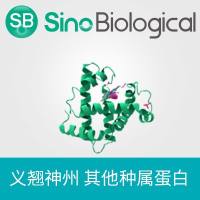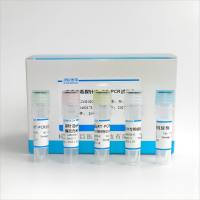Semiquantitative RT
互联网
- 相关专题
Semiquantitative RT-PCR analysis to assess the expression levels of multiple transcripts from the same sample
Maria Maronundefined, Simona Mozzetti, Daniela De Ritis, Luca Pierelli1, Giovanni Scambia
Department of Gynecology and 1Department of Hematology, Catholic University, L.go A. Gemelli 8, 00168 Rome, Italy. *To
whom correspondence should be addressed. E-mail: maria.marone@tiscalinet.it
Submitted: May 9, 2001 Accepted: November 9, 2001 Published: November 16, 2001.
Indexing terms: RT-PCR , mRNA, gene expression, technique, bcl-2
ABSTRACT
We describe a semiquantitative RT-PCR protocol optimized in our laboratory to extract RNA from as little as 10,000 cells and to measure the expression levels of several target mRNAs from each sample. This procedure was optimized on the human erythroleukemia cell line TF-1 but was successfully used on primary cells and on different cell lines. We describe the detailed procedure for the analysis of Bcl-2 levels. Aldolase A was used as an internal control to normalize for sample to sample variations in total RNA amounts and for reaction efficiency. As for all quantitative techniques, great care must be taken in all optimization steps: the necessary controls to ensure a rough quantitative (semi-quantitative) analysis are described here, together with an example from a study on the effects of TGF-b1 in TF-1 cells.
INTRODUCTION
Reverse Transcription-Polymerase Chain Reaction (RT-PCR ) is a highly sensitive and specific method useful for the detection of rare transcripts or for the analysis of samples available in limiting amounts (1,2). In most cases, when RNA analysis is required, a qualitative study is not sufficient to deliver a satisfactory answer. A common question is the quantification of specific RNA transcripts and the detection of any variation in their expression levels under different experimental conditions. We have often faced the problem of detecting poorly expressed transcripts, as well as that of handling small amounts of unique samples, such as primary hematopoietic cells (3,4) or tumor biopsies from human patients (5-7). When studies are performed in human primary models or in established and transformed cell lines in conditions requiring expensive reagents, analysis has to be performed with a sensitive but reliable technique because only a limited number of experiments can be run on each sample. A number of protocols and improved PCR techniques are now available, which will be discussed in the present manuscript, but these are not all easily accessible to a standard laboratory and have pitfalls together with the advantages for which they were created. Although reproducibility is always an essential requirement, extreme accuracy may not be: in most studies the focus is not to measure minor changes or the exact number of molecules, but an increase or decrease by at least 1.2-fold in expression levels. Hence, despite the greater accuracy of recently developed techniques, semi-quantitative methods are still widely used and appropriate for many puposes. Here we describe the standard procedure, optimized in our laboratory, to assess Bcl-2 levels with Aldolase A as an internal control, and all the necessary controls to ensure a quantitative analysis. Examples of the analyses of multiple markers and of the data obtained are shown.
Materials and Methods
Rna Extraction
RNA extractions were carried out with the RNeasy mini kit (Quiagen, Hilden, Germany), according to the manufacturer"s instructions. We normally used 2 x 105 Cell s, but cell numbers ranging from 1 x 104 to 2 x106 were successfully utilized. The following protocols are optimized on the human eryhtroleukemia TF-1 cell line (8), and were tested with Phytohemoagglutinin-activated lymphocytes, but different cell lines, primary hematopoietic cells and tumor biopsies were also used successfully. Samples were vortexed for 1 min to shear genomic DNA before loading onto the RNeasy mini columns, and then eluted in a minimum volume of 30 μl and a maximum volume of 2 x 50 μl RNAse-free water. RNA obtained with this procedure was essentially free of genomic DNA. When using different extraction procedures, or working with tissue samples, a DNAse I treatment, followed by phenol extraction and ethanol precipitation, was applied to remove traces of contaminating DNA (9).
Reverse Transcription
RNA obtained from 20,000 cells was reverse transcribed in the presence of 5 mM MgCl2, 1X PCR Buffer II, 1 mM dNTPs, 25 u MuLV Reverse Transcriptase, 1 u RNAguard Ribonuclease inhibitor (Amersham Pharmacia Biotech, Uppsala, Sweden), 2.5 μM Random hexamers in a final reaction volume of 20 μl. All reagents were from PE Applied Biosystems except when otherwise specified. Reactions were carried out at 42°C for 30 minutes in a Gene Amp PCR system 9600 (PE Applied Biosystems), followed by a 10 minute step at 99°C to denature the enzyme, and then by cooling to 4°C.








